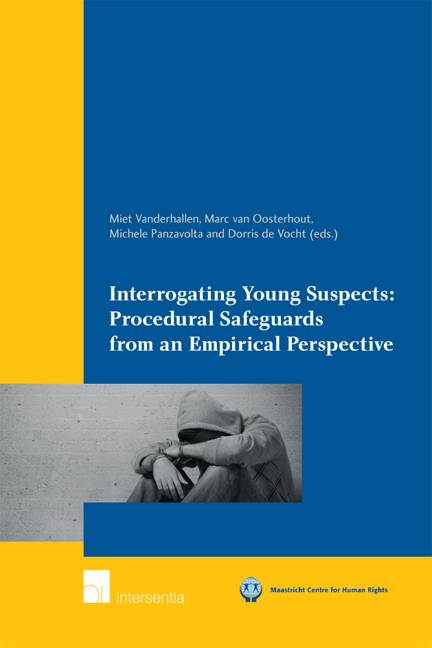Book contents
- Frontmatter
- Preface and Acknowledgements
- Contents
- List of Abbreviations
- Biographies
- Chapter 1 Introduction
- Chapter 2 Research Methodology
- Chapter 3 Belgium: Empirical Findings
- Chapter 4 England and Wales: Empirical Findings
- Chapter 5 Italy: Empirical Findings
- Chapter 6 The Netherlands: Empirical Findings
- Chapter 7 Poland: Empirical Findings
- Chapter 8 Integrated Analysis
- Chapter 9 The Guidelines
- Annexes
- Maastricht Series in Human Rights
Preface and Acknowledgements
Published online by Cambridge University Press: 21 September 2018
- Frontmatter
- Preface and Acknowledgements
- Contents
- List of Abbreviations
- Biographies
- Chapter 1 Introduction
- Chapter 2 Research Methodology
- Chapter 3 Belgium: Empirical Findings
- Chapter 4 England and Wales: Empirical Findings
- Chapter 5 Italy: Empirical Findings
- Chapter 6 The Netherlands: Empirical Findings
- Chapter 7 Poland: Empirical Findings
- Chapter 8 Integrated Analysis
- Chapter 9 The Guidelines
- Annexes
- Maastricht Series in Human Rights
Summary
This book is the result of the second part of the European Commission funded research project Protecting young suspects in interrogations: a study on safeguards and best practice. The project consists of a legal comparative study, an empirical study and a merging of legal and empirical findings and its aim is to identify legal and empirical patterns in the procedural protection of juvenile suspects during pretrial interrogation. The legal study underlying volume I consisted of a comparative research into existing procedural safeguards for juvenile suspects during interrogation in the legal frameworks of five selected Member States: Belgium, England and Wales, Italy, Poland and the Netherlands. The results of the empirical research as well as the merging of the legal and empirical findings resulting in a proposal for European minimum rules and best practice on the protection of juvenile suspects during interrogation are described in this second volume.
The successful completion of this project has been a joint effort of a group composed of many people. First, we would like to thank our academic partners – and in-country researchers – for their dedication to the project and the incredible amount of high quality work they delivered: Claudia Cesari, Deborah Felice, Jackie Hodgson, Vicky Kemp, Justyna Kusztal, Joachim Meese, Vania Patane and Barbara Stańdo-Kawecka. Empirical legal research is oft en extremely challenging because it is not easy to succeed in gathering necessary permissions and collecting relevant data. It was thanks to the knowledge, flexibility, openmindedness, patience and tenacity of our partners that we only experienced the positive sides of empirical legal research. Working with them has been an incredible opportunity of enrichment not only in legal matters.
The research and project have also benefited enormously from the advice and assistance offered by our supporting partners: we thank PLOT Limburg and Defence for Children for their support in organising project events, employing social media and disseminating research findings.
The project has benefited from the supervision of a Steering Committee, an advisory board of experts composed of leading scholars in the field of juvenile justice and criminal law coming from different jurisdictions: prof. Ray Bull, prof. Frieder Dünkel, prof. Gerard de Jonge, prof. Taru Spronken and prof. Anette Storgaard. We thank them for their valuable guidance and constant feedback while setting up and conducting the research.
- Type
- Chapter
- Information
- Interrogating Young Suspects IIProcedural Safeguards from an Empirical Perspective, pp. v - viiiPublisher: IntersentiaPrint publication year: 2016

